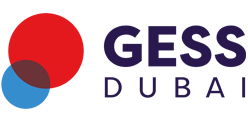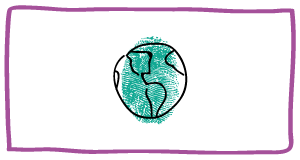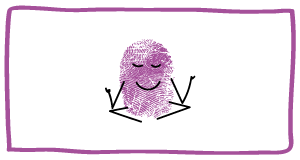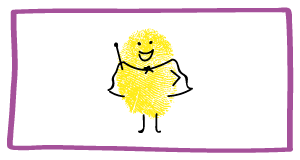Technology in Education
Don’t underestimate technology’s role in personalized learning.
It seems that for every generation, schooling can be defined in its own unique way. Where the chalkboard and abacus once ruled, the whiteboard and calculator came along to replace them—a prime example of just how transformational technology can be. Today, change is taking place once again.
While technology in the broadest sense of the word has gradually altered the face of education, the advancements during the past two decades have had an unprecedented effect on the classroom.
In the last few years, the pace of change has quickened. A report from Alpen Capital suggests the Middle East’s e-learning market will hit a peak value of USD $560.7 million in 2016, having grown at an average rate of 8.2 percent per year since 2014.
As a result, teachers today have never had a wider choice of tools, which presents both opportunities and challenges. Yes, new tools and platforms can help teachers to deliver better learning outcomes, but schools face the difficult task of understanding exactly which they should be investing in. On top of this, they need to overcome the practical hurdles of implementing new systems and helping teachers feel confident using them.
Integrating new methods into the education system was never going to be a straightforward task, especially for a sector that has traditionally been slow to adopt new methods and strategies. But it simply must happen if we are to continue improving the way our children learn. To the same end, another approach that is getting a lot of attention is personalization.
Personalized learning is simple to understand, although the exact definition is still up for debate. Generally, it refers to the educational methods and strategies that are used to provide pupils with an individual learning experience; one most suited to the way they prefer to learn. Many consider this approach to be far more effective than the traditional ‘sage on the stage’ method, where knowledge is simply dictated by the teacher to a large group of students.
As with every method in the modern educational world, the sector has been focused on how technology can enable and enhance personalized learning. Some see technology as the driving force behind personalized learning (you can count me in this camp), but on the other side of the fence, others consider technology to be a disruptive force in the classroom.
One example came from a feature I read in Newsweek (Europe), which explored Mark Zuckerberg’s recent venture into automated edu-tech. Developed in partnership with his wife Priscilla Chan, the Facebook founder’s personalized learning platform will use algorithms to provide pupils with content based on their past behavior and interests. The aim is to “customize instruction to meet the student’s individual needs and interests.” In the feature, the author argues that by subcontracting teaching to technology, we disrupt the important social interaction between teacher and student. In my experience, the opposite is true.
A more rewarding learning experience can be provided when new technology is used with the aim of personalizing education, and an excellent illustration of this is the ‘flipped classroom’ model. Although the concept had been explored before, the emergence of the flipped classroom is largely credited to two high school science teachers, Jon Bergmann and Aaron Sams.
Developed in 2007, their approach reverses the traditional teaching model whereby theory is taught in class before being applied and practised through homework. Instead, the teacher records theory to the most appropriate form of media—usually video—which the pupil can access at home via an online platform. The student can rewind and revisit the digitized learning materials as often as they want to make sure the concept is fully understood, before returning to the classroom to put this new theory into practice.
It is in this situation when knowledge now needs to be applied to problem solving tasks, where students typically require the most support. Flipped learning brings this important process back into the classroom where the teacher has the most influence. By rotating the teaching process, teachers now have the time to sit one-to-one with pupils and collaborate on problem-solving. In this way, the educator can think about which teaching methods each individual student is most receptive to, and deliver them to cement the pupil’s understanding of a topic quickly.
‘Flipped Mastery’ takes this even further by allowing educators to bundle learning resources together for each student, and build ILPs—Individual Learning Plans—around them.
With an ILP, pupils gain the freedom to walk a personalized learning path at their own pace. As a result, high achievers can be challenged constantly, and learn without being held back. Meanwhile, those who need more help to grasp a concept are given the necessary time and support from the teacher.
To avoid alienating those students who require more time, the flipped learning method could even incorporate peer learning, where a pupil who excels in a subject helps those who need extra support. But this doesn’t mean the teacher can slip out of the classroom for a cappuccino. Through peer learning, students develop crucial life skills such as teamwork, interpersonal communication, and mentoring. This is one way to teach the ‘whole student’ and develop well-rounded individuals who are prepared for the professional world—an important priority for us at Aldar Academies. We have successfully adopted flipped learning across our curricula, and my role is to make sure the methodology is the right fit for our highly diverse student base.
I would argue that in the Middle East, the importance of concepts like flipped and personalized learning is greater than other regions. Expats now account for over 48 percent of the GCC population, according to go-gulf.ae, while the Middle East has more international schools than any other region, says the International Schools Consultancy. This means an increasing number of pupils from different cultures and with different experiences and expectations are brought together in the same classroom. A one-size-fits-all approach is simply not the most effective way to teach them because it cannot give every child the opportunity to realize their true academic potential.
GCC governments realize this, and are increasing their investment in education to raise the standards of teaching. The Alpen Capital report notes how the Saudi, UAE and Omani governments allocated over 20 percent of their 2016 budget to education—more than the U.S., UK, and Germany. This included investment in smart education concepts such as personalized learning.
Technology has allowed us to break down the walls of the traditional classroom, giving us more freedom to support students in a customized way. However, it’s important to note that for a new strategy to be a success, a thorough support system must be put into place for all teachers. This responsibility ultimately lies with those who lead a school’s technology strategy. They need to manage the pace of any technological change and organize appropriate training, as many teachers may be unfamiliar with the new way of doing things. If they do not feel confident applying a new tool or digital method in the classroom, the change could have a negative impact on their students’ education.
We must remember that while technology can do many things, it has no place in the classroom if it doesn’t make a positive contribution to teaching and learning; the definitive outcomes of any educator.
Ultimately, technology exists to enrich and simplify our lives. In the classroom, new digital methods have made it much easier for our children to grasp a concept in their own unique way. In other words, they’ve made learning more personal. No two pupils are the same, so why should teaching methods be?
Andy Turner is the Head of Education Technology, Aldar Academies.





